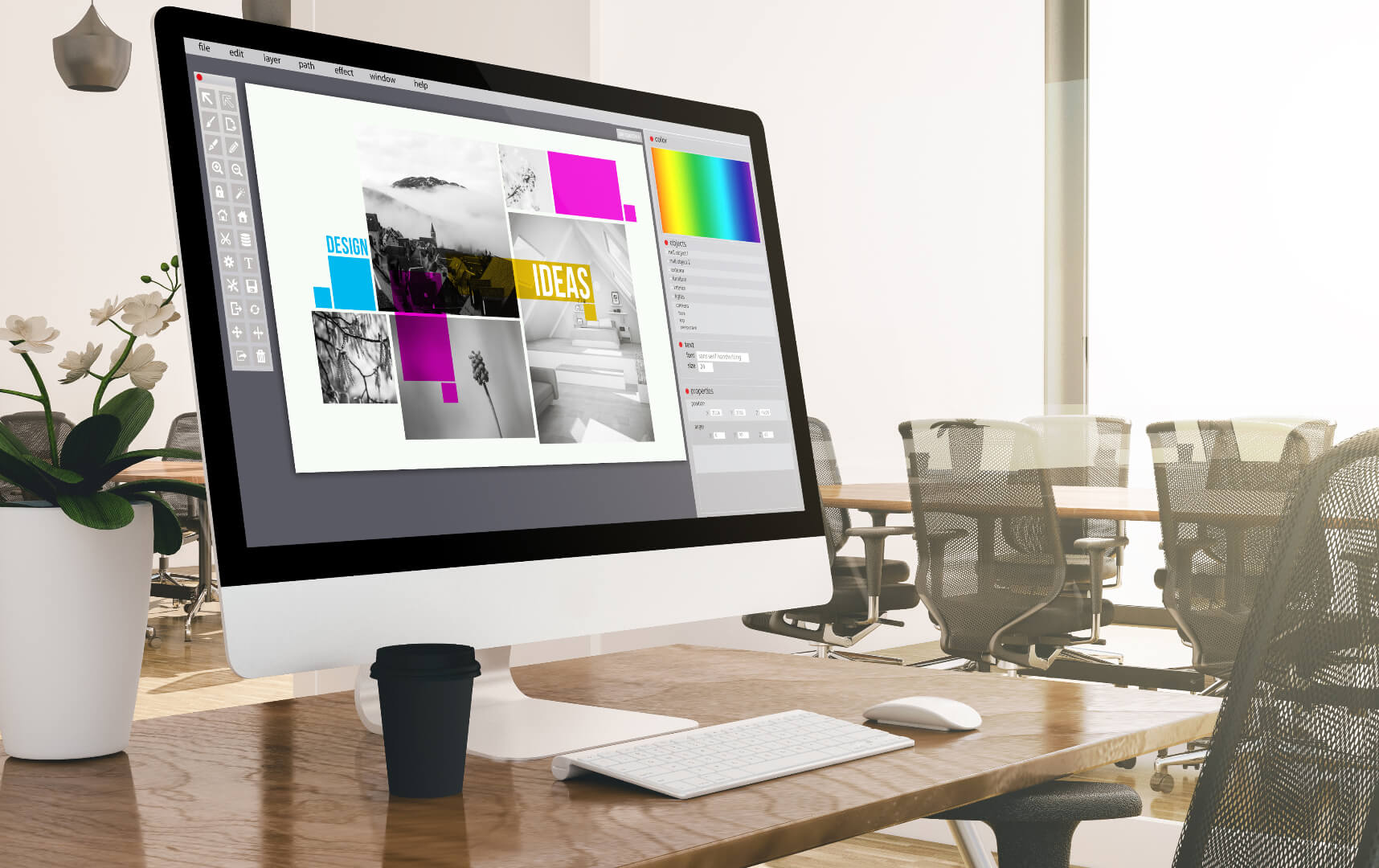Two popular methods dominate the industry when it comes to printing: digital printing and offset printing. Each method has its advantages and considerations, making it essential to understand their differences.
Whether you're a business owner looking to print marketing materials or an individual seeking high-quality prints, understanding the pros and cons of each method will help you make an informed decision.
Below, we will explore the world of offset and digital printing, comparing their various printing processes, benefits, and applications to help you discover which option best suits your needs.
Offset Printing vs. Digital Printing
Offset printing, a traditional method, is renowned for its high-quality output and cost-effectiveness in large-volume jobs. Digital printing, a more modern technique, offers speed and flexibility, which is particularly beneficial for projects requiring personalization and quick turnaround times.
What is Offset Printing?
This process is the most common printing technique, utilizing large plates and a 4-color CMYK print process. These four ink colors (Cyan, Magenta, Yellow, and black) are mixed and transferred onto the paper stock. It’s a commonly used printing technique that transfers the inked image (or "offset") from a plate to a rubber blanket and then to the printing surface.
It's a technique named after the process it uses. It provides high-quality prints with sharp and vibrant colors, making it ideal for high-volume projects such as brochures, magazines, and catalogs. Due to its efficiency and ability to produce consistent results, it is a cost-effective option for bulk printing.
Did You Know: During the offset printing process, ink rollers transfer ink from the printing plate to the paper.
It provides some of the highest print-quality pieces and is most often used for print jobs where quantities over 500 are needed. However, it requires the creation of printing plates, which can increase setup costs and make it less suitable for small print runs or projects that require frequent design changes.
Advantages of Offset
Offset stands out as a top choice for diverse printing requirements, offering several advantages such as:
- It's more affordable to print in large quantities.
- When you print more copies, the cost per piece decreases.
- Various paper types are available with custom finishes.
- Highest possible printing quality, with greater detail and color fidelity
- Receive optimal results at high volume and speed.
Disadvantages of Offset
Despite its popularity, it does have a few drawbacks. We've included a few of its disadvantages:
- High setup costs result in higher expenses for small-batch prints.
- The setup process is more time-consuming, which can result in longer turnaround times for completing some print jobs.
- Attention is needed to guarantee high-quality results.
- Unable to modify the designs until the whole batch is completed.
What is Digital Printing?
It's a modern printing method that has gained popularity in recent years. It involves directly transferring digital files printed directly onto the paper stock, similar to a home printer, but with much better quality.
It has become an increasingly popular option for small print runs or projects that require frequent design changes. Digital printers offer quick turnaround times and allow for on-demand printing, making them suitable for personalized materials, such as business cards, flyers, and invitations.
Did You Know: Digital printing uses electrostatic rollers—called “drums”—to apply toner and add full color onto the paper.
While digital printing may not match the exact color accuracy and sharpness of offset, technological advancements have significantly improved its quality, making it a viable option for commercial printing.
But don’t think that it will lower your image quality. It often takes a keen eye to see those subtle differences. Photos and rasterized images lend well to digital printing, while vector art and designs will be crisper with offset.
Advantages of Digital Printing
There are numerous benefits to using this process, and its popularity is increasing daily. As businesses evolve and their communication needs change, the most efficient and convenient methods become the go-to option.
Digital print equipment is among the most advanced available in the market. Below are a few major advantages of using digital printing machines:
- Setting up production operations provides a lower cost when the number of units produced is smaller.
- Print only the required amount when necessary.
- Minimal order quantities can be as low as 20 or 50 pieces.
- The ability to easily include variable data such as names, addresses, codes, or numbers.
- Advancements in technology have enhanced the quality, making it suitable for a broader range of applications.
Disadvantages of Digital Printing
While it offers several benefits, it's important to consider its limitations. Below are a few disadvantages to keep in mind:
- The cost per page remains high even when the quantity is increased, and the cost does not decrease.
- Limitations on the types and thicknesses of materials they can print effectively.
- The prints can crack and flake when scored (creased) or folded.

Key Differences Between Offset and Digital Printing Technology
Let's explore the key distinctions between the two methods, focusing on their processes, color accuracy, customization capabilities, print run efficiency, and cost implications.
Setup Process
One of the main differences lies in the setup process. Offset requires the creation of printing plates, which can be time-consuming and costly.
Digital printing, on the other hand, eliminates the need for plates, allowing for quicker setup and lower costs for small print runs. Additionally, offset printing is known for its ability to produce consistent and high-quality prints, especially for large-scale projects.
Cost-Effectiveness
Another significant difference is the cost-effectiveness for different print quantities. Offset printing is more cost-effective for large print runs due to its efficiency and lower per-unit cost. Digital printing, on the other hand, is more affordable for small print runs or projects that require frequent design changes, as there are no setup costs involved.
Turnaround Times
There is a significant difference between the two regarding turnaround time. Offset printing usually takes longer to set up, primarily because it involves creating plates and preparing the press before printing can begin. This extended initial process means that offset printing might not be the quickest option for urgent projects.
Digital printing is well-known for its capability to provide fast turnaround times. Since it requires minimal setup and bypasses the plate creation step, it's a go-to choice for projects with tight deadlines, allowing quicker production and delivery.
Customization
There are clear distinctions between the two printing techniques when it comes to customization. Offset printing, while reliable for many tasks, offers less flexibility regarding custom designs. Creating new plates is necessary for any content change, making the process less adaptable for varying designs within a single print run.
Read More: Mastering the Art of a Business Card Design
Digital printing, however, excels in customization. Known for its variable data printing capabilities, it seamlessly allows changes in text or images from one print to the next without hindering the printing process. This feature makes digital printing a perfect match for personalized marketing materials, where each piece can be tailored to the individual recipient.
Choosing the Right Printing Method
Several factors should be considered when deciding between both printing options. If you want high-quality prints for large-scale projects and have an adequate budget, offset might be the best choice. It offers consistent results with vibrant colors, making it suitable for brochures, magazines, and catalogs.
On the other hand, digital printing may be the better option if you need quick turnaround times, on-demand printing, or have a limited budget. It allows flexibility, easy design changes, and cost-effectiveness for small print runs or personalized materials.
Choosing different printing methods depends on your specific needs, budget, and timeline. So, next time you embark on a project, consider the differences between the two to ensure that you achieve the best results.
Keep in mind, besides these two popular options, there are several other printing methods, each with unique characteristics and applications. They include:
- Screen Printing
- Letterpress
- Flexography
- Lithography
- Inkjet Printers
- Thermal Printing
Each process has unique benefits and is chosen based on the specific requirements of the print job.




